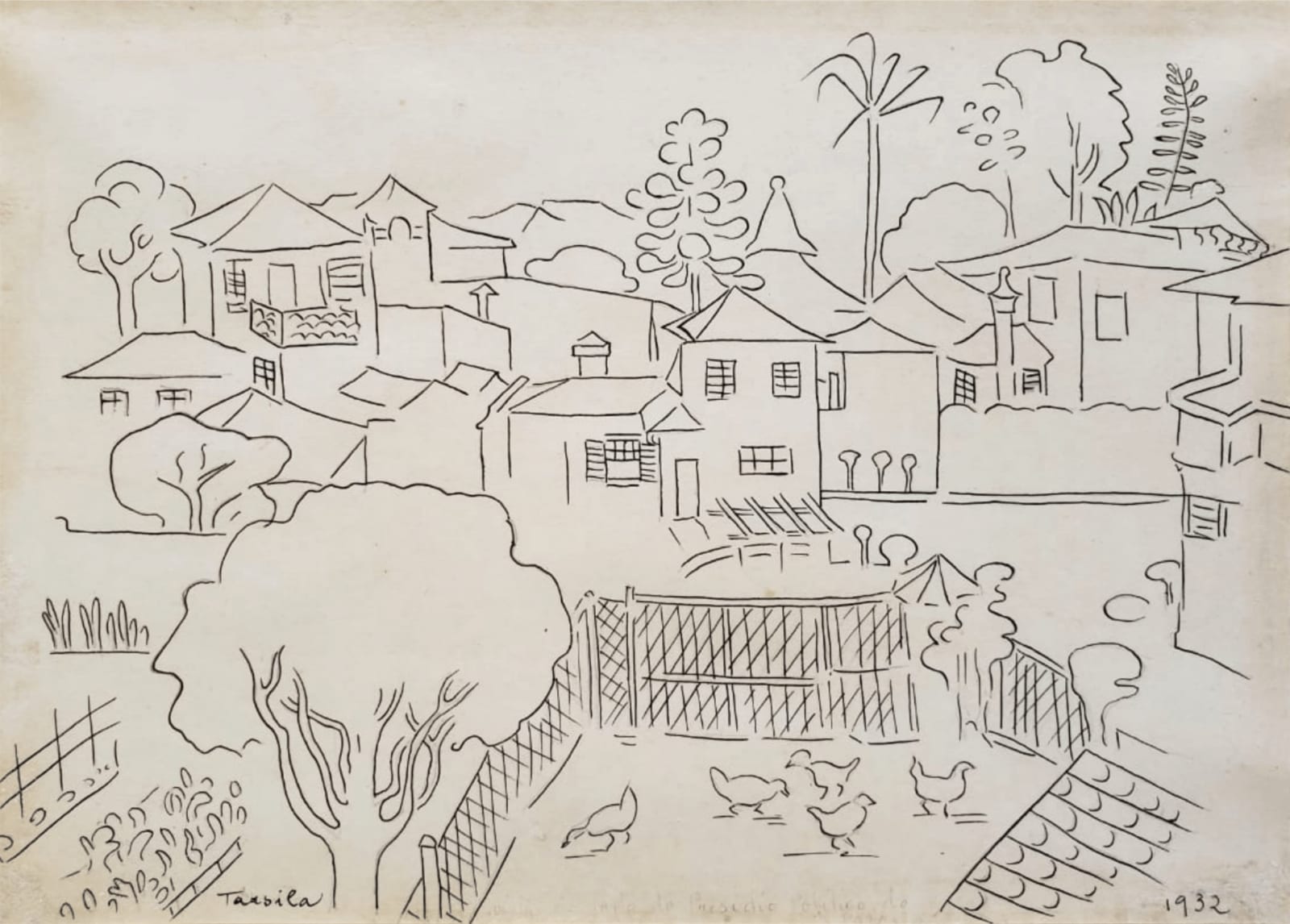
Tarsila do Amaral
6 1/4 x 9 1/8 in
At first glance, Tarsila do Amaral’s Vista do bairro Paraíso (1932) appears as another iteration of the artist’s skillful and imaginative depictions of the lush Brazilian countryside. Bulbous, still trees reside in a dreamlike atmosphere, populated by schematically rendered homes and fences. Here, however, Tarsila is not dreaming of Minas Gerais, or of her native Brazil’s distinctive flora and fauna. Instead, as the inscription on the back of the drawing makes clear, she is capturing a “view from the side of the Paraíso Political Prison.”
In 1932, Tarsila was briefly interred in Paraíso Prison in São Paulo due to her growing interest in leftist politics. She had recently returned from a trip to the USSR with her then-partner Osório César, where she held an exhibition in Moscow and was impressed with certain elements of the country’s social and political organization. Tarsila’s Vista do bairro Paraíso is therefore a powerful document, one that records Tarsila’s increasing interest in the social realm after the conclusion of her “Anthropophagic” period. It signals the beginning of a current in Tarsila’s work in which she begins exploring new themes related to class and social issues.
Vista do bairro Paraíso is included in the artist’s catalogue raisonné.
Join our mailing list
* denotes required fields
We will process the personal data you have supplied in accordance with our privacy policy (available on request). You can unsubscribe or change your preferences at any time by clicking the link in our emails.